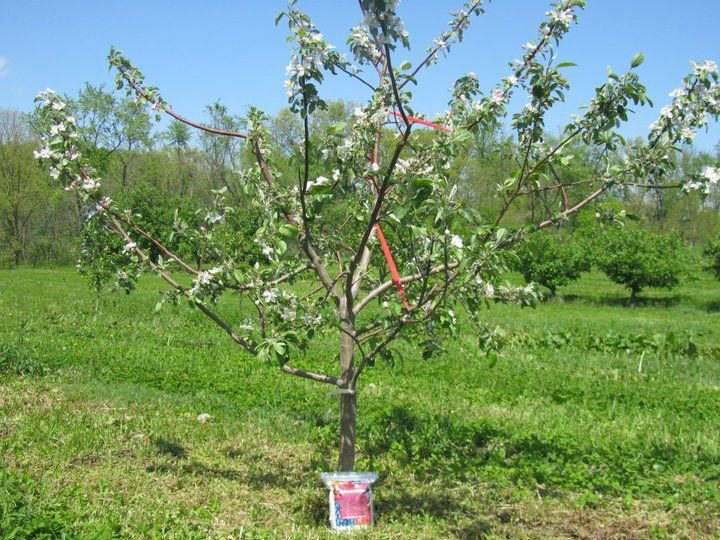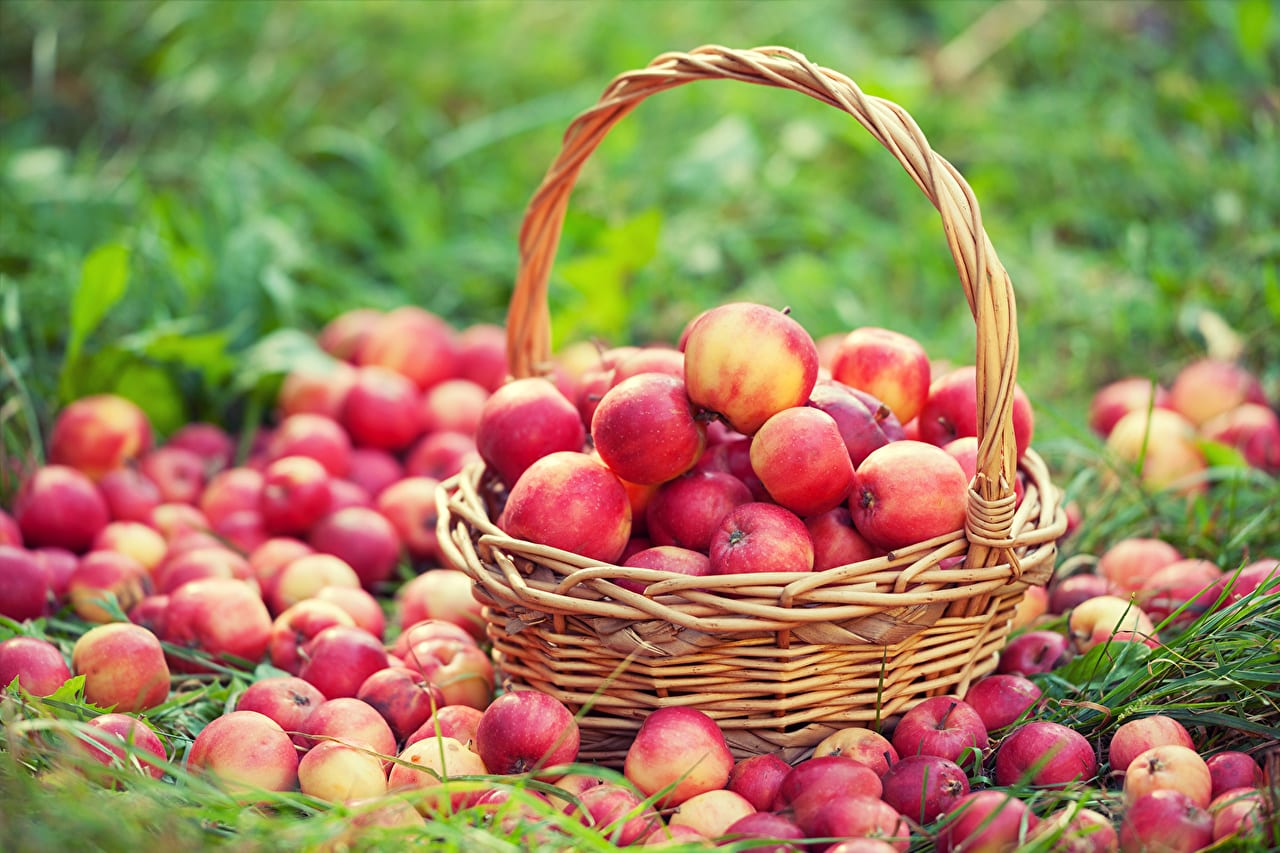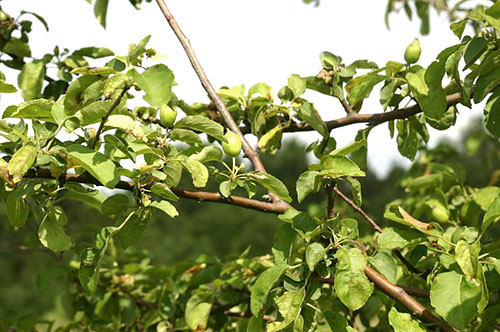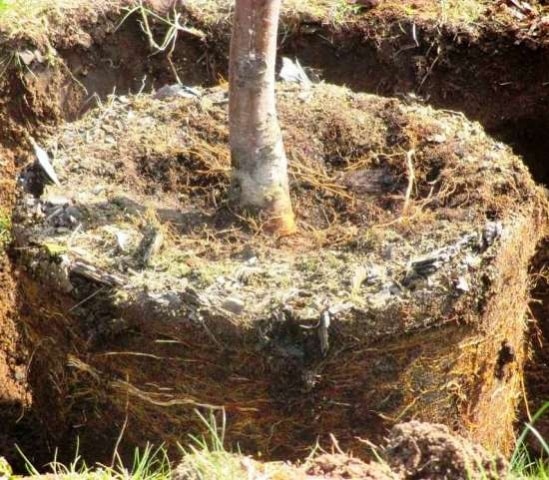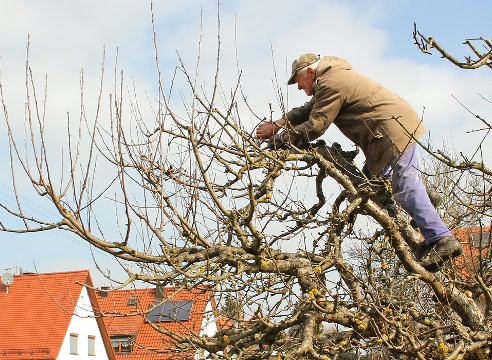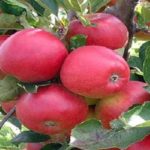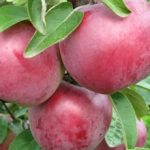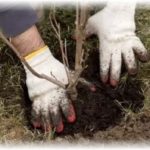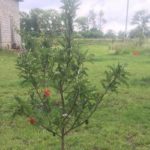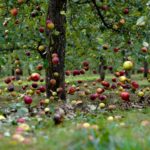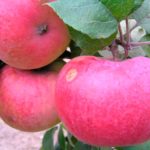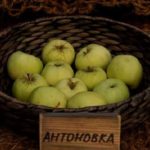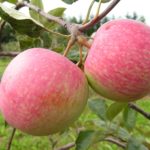When growing apple trees, there are cases when the tree regularly blooms, but does not bear fruit. Also, fruiting may be insufficient or inconsistent due to negative external influences or unfavorable weather conditions. When wondering why a planted apple tree does not bear fruit, it is necessary to find out the cause of the problem in order to restore productivity.
- Reasons for the absence of fruits
- Complete absence of apples
- The landing was carried out with gross errors
- Young age of apple tree
- High concentration of trace elements
- Flower bud diseases
- Problems with pollinating varieties
- Irregular fruiting
- High yield
- Features of the variety
- Problems with pruning and crown shape
- Measures to solve the problem of fruiting
- Eliminate the cause and wait for the result
- Replant an apple tree
- Improve pollination conditions
- Fertilizers and fertilizers
- Pest and disease control
- Trimming
- Planting according to the lunar calendar
- Traditional methods
- other methods
Reasons for the absence of fruits
In practice, gardeners encounter a large number of different reasons why an apple tree does not bloom. The presence of negative factors leads to the cessation of fruiting or partial loss of the harvest.
Complete absence of apples
In the most advanced situations, there is a complete lack of harvest. Inexperienced gardeners are often faced with the question of why the apple tree blooms but there are no fruits. The reasons are violation of landing rules, illness, negative environmental conditions.
The landing was carried out with gross errors
When planting apple trees, it is necessary to observe a number of nuances, since making mistakes affects the amount of harvest. Before planting, a constantly illuminated place is selected on the site, protected from through blowing. Groundwater for apple trees should be located further than 2 m from the ground surface. When planting plants, it is necessary to first prepare the hole and add fertilizer to it.
Young age of apple tree
Some tree varieties bear fruit several years after the first flowering. To begin with, apple trees need to form a powerful root system, adapt to environmental conditions, after which fruits form on the branches.
High concentration of trace elements
An excessive amount of fertilizer in the soil leads to the fact that the apple tree begins to bloom profusely without bearing fruit. Most often, this situation occurs when nitrogen fertilizers are applied to the soil in a significantly higher dosage.To solve the problem of increased concentration of microelements, it is necessary to reduce the amount of fertilizing.
Flower bud diseases
Under the influence of spring return colds or in case of infection with a flower beetle, diseases of flower buds may develop. To protect trees, it is necessary to apply repellent treatments and cover the plantings at low ambient temperatures.
Problems with pollinating varieties
Some varieties of apple trees require inflorescence pollination to grow. If pollinating varieties are not planted on the site, apple trees do not develop sufficiently and do not form fruits. In order for trees to be well pollinated, it is necessary to grow several varieties that bloom at the same time. In a limited area, it is possible to carry out cuttings to the crown of a growing tree so that the grown branch plays the role of a pollinator.
Irregular fruiting
There are situations when apple trees do not ripen crops every season. The reasons for inconsistent fruiting lie in improper care, individual characteristics of the variety and other external factors.
High yield
If in one season the apple tree bears a large number of fruits, then over the next few seasons there is a possibility of a decrease in yield. This situation can occur with excessive fertilization of seedlings, due to which the fruits begin to ripen intensively ahead of schedule. To prevent irregular fruiting, the amount of fertilizer should be controlled.
Features of the variety
When choosing a suitable variety for cultivation, it is necessary to take into account its characteristics. Some varieties produce crops irregularly due to individual characteristics.Such varieties of apple trees are suitable for gardeners who do not have the opportunity to collect fruits during each season.
Problems with pruning and crown shape
Removing a large number of shoots during the formation of the crown leads to an imbalance of the roots and the surface part. As a result, the apple tree needs to restore balance and actively increase the vegetative mass without bearing fruit.
To prevent a reduction in yield due to improper pruning, the following points must be taken into account:
- Only dried and twisted shoots that interfere with the normal development of the tree are cut off.
- When pruning, it is important to carefully inspect the apple tree to detect any tops growing vertically upward. They absorb excessive amounts of nutritional components and slow down fruiting.
- For pruning and shaping, a sharp pruner is used to cut the shoots evenly.
Measures to solve the problem of fruiting
Timely implementation of a set of measures helps restore the productivity of apple trees. If the question arises - how to make an apple tree bear fruit, you should determine the cause of the problem and, taking into account the condition of the tree, resort to appropriate measures. By creating a favorable environment and constant care, the plants will begin to bear fruit every year.
Eliminate the cause and wait for the result
Having discovered a problem with apple tree fruiting, it is necessary to completely eliminate the cause of the reduction in yield. The recovery method depends on the specific cause and may involve changing the rules of care, combating harmful insects and diseases. After eliminating the negative factors, all that remains is to maintain the plants in a healthy state and wait for the result.
Replant an apple tree
If the reason for the low yield is the wrong location on the site, you should dig up the tree and move it to a more suitable area. When performing a transplant, you must follow a number of rules:
- The optimal age for transplantation is the first year of life. In subsequent years, it is better to transfer plants with a closed root system.
- When digging up a seedling, it is necessary to carefully remove the tree from the ground so as not to damage the fragile roots.
- Early spring is more suitable for transplanting fruit trees. During the hot season, the apple tree will have time to adapt to its new location before the first frost occurs.
Improve pollination conditions
To increase productivity, it is necessary to attract insects to the garden area that can pollinate the inflorescences. Plants with pronounced aromas can be planted next to apple trees, including borage, dill, and cumin. Certain varieties of fruit trees are also suitable as pollinators. The gardener just needs to select seedlings that can mutually pollinate each other and place them side by side on the site. The optimal amount for cross-pollination is considered to be planting 3-4 different varieties.
Fertilizers and fertilizers
During intensive development and fruiting, large amounts of nutrients are absorbed from the soil. Apple trees need fertilizer throughout all stages of growth. The foundation for the planned harvest is laid in the spring, when the plants grow foliage and young shoots. Mineral and organic fertilizers are applied to the trees. If it is necessary to accelerate the formation of the crown, fertilizers with a predominance of nitrogen should be used.
Pest and disease control
Any fruit plants are susceptible to infection and insects.Diseases such as powdery mildew, scab, fruit rot, milky shine and cytosporosis pose a danger to the apple tree.
Among the parasites characteristic of the apple tree are: green aphid, hawthorn, codling moth, flower beetle and copperhead.
The consequences of plant damage are darkening of the foliage, the occurrence of defects, rotting, deterioration in the quality of fruits, and a reduction in yield. To combat pests and diseases, spraying with drugs from the insecticidal and fungicidal categories should be carried out.
Trimming
Trimming the crown provides access to air and sunlight to the fruits. Primary pruning is carried out a few days after planting the seedling in a permanent place in order to redistribute the nutritional components between the upper part and the roots. Next season, the apple tree is pruned again, leaving the strongest branches. The central shoot is shortened so that it rises 20-25 cm above the other branches.
Planting according to the lunar calendar
Among gardeners, planting fruit trees according to the lunar calendar is very popular. Depending on the phase of the month in which the seedling is planned to be grown, it is possible to calculate the days when the environmental conditions will be most favorable for the subsequent development of the plant. In particular, information from the lunar calendar helps to calculate the period during which the amount of underground moisture is sufficient to saturate the roots.
Traditional methods
When growing apple trees, it is recommended to use traditional methods as additional measures to increase productivity. Their list includes the following:
- Spraying seedlings with organic decoctions that prevent the development of infections and stimulate growth.
- To strengthen the roots, hilling is required next to each tree.
- It is recommended to place young seedlings in the direction from east to west so that the sun warms all the plants evenly.
- The soil in the area where the roots are located must be mulched to protect against the effects of low temperatures and weed germination.
other methods
Less common methods include: artificial delivery of nutrients to the roots, chemical thinning, and standardization of the number of fruits. Implementation of a set of measures helps restore plant health and increase the amount of harvest.

